Thoughts on Letting Go, Releasing, and the Importance That I Stop "Shoulding" On Myself
Learning to let go of my own high expectations for myself, my own self-judgment and self-criticism, my own sense of internal obligation has been one of the most difficult parts of my creative process.
This is an excerpt from Chapter 2 of my book Hook to Heal!: 100 Crochet Exercises For Health, Growth, Connection, Inspiration and Honoring Your Inner Artist which is a chapter on Letting Go. Each chapter in this book introduces a topic where we might need some healing practice then provides my original crochet exercises for working through those challenges along with Yarn for Thought to dig deeper into the questions asked and what arises as the person crafts. This is the introduction to that second chapter. I wanted to share it here today because I’ve been reminded recently of the important tip to be gentle with myself and that relates specifically to how hard it can sometimes be to creatively pivot, change, release, let go.
The thing about creative work is that it’s not always emotionally easy even though it is really valuable and ultimately beneficial. We’re going to do some tough inner work in this process. However, you can’t do that work unless you’ve created a safe space for yourself. We’re not here to beat ourselves up. In fact, self-doubt and self-flagellation are things that have probably been blocking most of us artistically for far too long already. Instead, we’re here to gently midwife our own inner artist into the world and to do that we need to make that world a safe, cozy space. That’s why we’re going to start this process by focusing on letting go, releasing and relaxing.
Letting go of expectations. Letting go of obligations. Letting go of self-criticism. Let go of the end product, release control, be willing to make mistakes. The exercises in this chapter are all about using crochet to release ourselves and relax.
Before we get into the exercises for this chapter, I want to let you know that every single thing I discuss in this book is something that has been a personal challenge for me in one way or another and that I’ve used crochet to help me get through it. Although not every exercise is going to benefit every person, it’s important to me that none of it is fluff either. It’s stuff I’ve tried, stuff I’ve used in my own life and even when it didn’t solve my problems I could see some benefit as I worked through it all. Life is hard, but the thing is that most of the challenges that we face are challenges that everyone else has faced at one time or another as well. When we are open about our difficulties and share ideas about how to get through the tough times, we help make life less challenging for everyone.
At first glance, you wouldn’t think that it would be all that hard to let go, release and relax. After all, we’re constantly offered opportunities for endless entertainment and ideas for stress-busting, decompressing and chilling out. We all know about the value of rest, the benefits of vacations (and staycations!), the need for downtime. We all know that we should be kind to ourselves if we want to be happy. Every magazine and self-help website tells us these things. Every spa deal and vacation destination offers the promise of that peace. But if you think about it, we wouldn’t need to be bombarded with those ideas if letting go and just relaxing weren’t such a constant challenge for almost all of us. Perhaps it shouldn’t be so hard to just relax and be easy on ourselves but in this society, in this era, it often feels impossible.
At least, that’s been my experience. Learning to let go of my own high expectations for myself, my own self-judgment and self-criticism and my own sense of internal obligation has actually been one of the most difficult aspects of my own creative process. It is something I am constantly working on, continually having to stay vigilant about, often having to return to in order to work through it in a different way. Being hard on myself is second nature to me and it doesn’t go away easily even though I’m aware of the damage that it does me.
And damage it has done. Depression literally almost killed me when I was in my twenties. There were many, many reasons for that depression and it’s a long and complicated story but the important part here is that the depression was significantly exacerbated by how hard I was on myself all of the time. At the time, I didn’t even realize how mean I was to myself with all of the “shoulds” and “ought tos” and “not good enoughs” that I was using to beat myself down.
Let me give you the most basic example of how something simple in everyday life can become weighted down with difficulty when you are hard on yourself. I’m thinking back to a time of deep depression when it was difficult to just get out of bed. I’d wake up in the morning, groggy and fatigued from an insomniac tossing-and-turning night, and before my feet had even touched the floor my mind would be attacking itself. “I should get up now.” “I should get started on work.” “I should be doing work that’s more creative than whatever I’m supposed to be working on today. If only I’d finished the boring work yesterday when I had time then I could spend today being creative. I’ll never be creative again.” “I should call my friends. I haven’t talked to any of them in so long. I’m being a terrible friend. I’m not even sure why anyone likes me.” “I shouldn’t be so hard on myself. Beating myself up isn’t going to help. I should relax. I should go to a yoga class. I should learn to meditate.” “What’s wrong with me?” Should, should, should, bad, bad, bad … And with all of these thoughts swirling in my mind, just the very act of getting out of bed became too overwhelming. So I’d stay in bed and be mad at myself for staying in bed and then be mad at myself for being mad at myself … in this endless cycle that just perpetuated and exacerbated the depression.
That’s just one example of how being hard on myself worsened my depression. I’m hoping that it’s an example that you can relate to – not because I would wish that on anyone but because in my experience this kind of thing is something that we each do to ourselves far too often. We place a bunch of expectations on ourselves – reasonable or unreasonable – and then when we fail to meet those expectations to our highest standards, we feel bad about ourselves. It’s terrible. It makes life feel far harder than it should. And it’s something that we often do to ourselves in our creative work.
It’s definitely a problem that I face in my own creative process. I’ve chosen to intertwine my work life and my creative life, and there are many wonderful things about doing work I creatively love but the flip side of that is that it becomes even more difficult to navigate those tricky waters of letting go when the creativity is tied up in making a living. There is a lot more at risk, of course, but there’s also a lot more socially-sanctioned self-pressure in our work lives. I want to be creative and also to be successful and I have a lot of ideas about what that looks like. The problem is that the expectations I have for success can often block the creative process.
I’m the first to admit that I’m ridiculously hard on myself, although I’m getting better at it with a lot of personal growth work. I’m not 100% sure where this comes from, although I have some suspicions. For example, I think that a lot of it comes from being the eldest child in a family of three with siblings that were significantly younger than me. I’ve explored birth order theory quite a bit and my family dynamics are pretty straightforward in terms of matching the basics of what it means to be an eldest, middle or youngest child. As an eldest, I tend to be a perfectionist. I was a mother figure to my siblings, the one that they looked up to and mirrored, the one that knew how to do things “better” just by virtue of having learned to do them first. That gets ingrained into you somehow and creates this need to always be the best, the first, the leader, the one who excels. The pressure for that gets internalized and even when nobody else expects me to be on top of my game, I expect it of myself.
This drive is what has led me to succeed in working independently as an author and solopreneur. Many of my friends have told me that they couldn’t do my job. Some personalities need the oversight and direction of others in the workplace to keep them motivated, driven and on task. I’ve not only never needed that; I’ve never thrived in that kind of setting. I thrive by setting my own deadlines, expectations, desires, goals and then meeting or exceeding those. The drawback to that is that it can create a dangerous cycle; I feel like in order to do well, I need to have high self-demands and I see that meeting those demands makes me feel that I’m doing well so then I set higher demands for myself. And the truth is that I still think that’s an important part of being successfully self-employed in creative work. But it’s a difficult way to live, and I’ve had to learn (slowly, surely, often in a one-step-forward-two-back kind of process) that there are ways to manage expectations and be easier on myself even while still setting and achieving goals.
Let’s take a look at how this plays out in one area of my creative life – my blog, Crochet Concupiscence. I started this blog in January 2011 as a purely fun, creative thing. I love crochet, I love writing, and I wanted a new and inspiring project that would allow me to explore both of those things in depth. Even from day one, though, I took this side project very seriously. I set a blogging schedule and committed to doing posts every single day. (In fact, I did multiple posts daily in that first year.) I was (and am) dedicated to research, thoughtfulness and honest self-expression in my posts on that blog. I’m happy with this risk. But wanting to do this work well can be a double-edged sword and I run the risk of cutting myself on that creativity.
Some of the ways I’ve been known to beat myself up with “shoulds” even when it comes to this blog that I love include:
Irritation or disappointment with myself on the rare occasions that I’ve missed a posting day. I “should” be posting daily, I tell myself. No one else tells me to do this. Likely no one really notices or cares. There’s no reason in the world that I must post daily except that it’s the goal I set for myself. And yet I get angry at myself when I miss a day.
Feelings of embarrassment when a post doesn’t feel up to par. Typos are a particularly common problem for me and although I’ve come to realize that they don’t bother me personally, I still sometimes get embarrassed when other people point them out. I “should” always have a professional writing appearance for my blog.
Sense of inadequacy when it comes to web design and tech things. I get overwhelmed with feelings of frustration when I can’t get certain tech things to work right on the blog, when I’ve had server problems that I didn’t understand or when I’ve had doubts about the blog’s design. I “should” have a perfect blog that always looks great and works wonderfully.
So there have been challenges for me in the letting go process when it comes to my blog. I’ve had to learn that those “shoulds” are things I’m telling myself, and that being mad at myself for not being perfect will not actually make the blog better. There’s a difference between striving to create a better product and being mad at myself for not already having it absolutely perfect … and I’ve had to work with letting go of expectations and self-criticism in order to understand that difference. I’ve had to acknowledge that there are areas of the blog that not only aren’t strengths for me but aren’t actually of interest to me, like the background tech stuff, and I’ve learned to hire people to help me with some of that and simply to let other things go.
Most importantly, I’ve learned to shine the spotlight on my creative successes and the things that I am proud of when it comes to Crochet Concupiscence and to make those the focus of my energy. It’s easier to improve upon the things that I already like because I’m happy with what I’m doing than it is to work on things that are causing me stress. In other words, if my thought process is “I should never have a typo on my blog” then I can get so mired down in proofreading and editing that the posts stop being fun and I dread doing them and it becomes a joyless blog that nobody can have fun with. In contrast, if my thought process is “I love creating community by celebrating the work of amazing crochet artists” then I get excited about doing the posts, I give them more attention, there are naturally fewer typos and the overall vibe of the blog is one that’s positive, spirited and joyful for everyone. Let’s focus on what we’re doing well, and on what we enjoy, not what we wish we were doing better, especially when it comes to our crafting and creativity!!
I’ll share one more aspect of my own letting go story before we move forward and that’s how I’ve learned to let go specifically in my crochet work. It is horrifying to me when I think back on all the “shoulds” and expectations and stresses I’ve had about my crochet work. I crochet for fun. I crochet for myself. I crochet for no other reason than to relax, heal and enjoy my time. And yet, in the past I’ve managed to make a painful mess of that experience by having “shoulds”. Some of the crochet “shoulds” I’ve lorded over myself have included:
I should crochet more often.
I should use more colors when I crochet.
I should not have knots in my work.
I should weave in my ends the “right” way instead of the easy way that I actually prefer.
I should crochet more for charity instead of just for myself.
I should go back and frog a piece when I realize I’ve made a mistake instead of just fudging it and moving forward like I usually do.
I should learn to block my work properly.
I should photograph my work more expertly so it looks better on the blog.
What the heck?! Why am I using all of those shoulds to make my creative life less fun? Why would I do this to myself? Because the truth is that what underlies all of these “should” messages is the message I tell myself that I’m not good enough just the way that I am. And it’s not true. What I make in any given moment is exactly enough for that moment. If I only crocheted once a month in a single color, never weaved in my ends and never fixed my mistakes, it would still be perfect because it’s clearly exactly what I needed to do at that time. Crafting shouldn’t be stressful; it should relieve stress.
When we put these pressures on ourselves, we actually cause pain in the world around us. When I essentially say to myself, “you’re not doing this craft you love good enough” then it’s a message I send out into the world that there’s a right way to express creative urges and no other way is acceptable. Even if I never say that out loud to anyone else, it’s part of the energy that I’m emitting around me, and it infects other people. Everyone around me starts to feel like there’s a “good enough” and a “not good enough”. This feeling hinders their own creative process because they can’t match up to what they think they should be doing. We all suffer as a result.
If we want to improve our own quality of life through crafting, we have to learn to let go. We have to stop seeking perfection. We have to stop saying that where we are at is not enough. We can find ways to strive to make our best work without beating ourselves up for its perceived flaws. We do this by letting go of controlling the end product and focusing on the creative process. And there are many, many ways to do this through crochet.
NOTE: A couple of years after writing this original piece, I let go of the Crochet Concupiscence blog entirely, selling it to someone who unfortunately didn’t do anything with it but accepting that it was time for me to move into new things.
This is how art and health intersect in my life. If you are interested in understanding this in your own life: Order a Creative Health Assessment or Book a 1:1 Coaching Call.


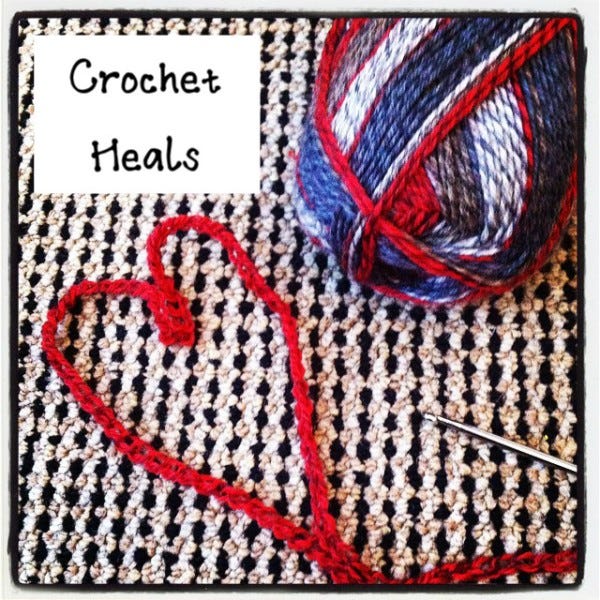
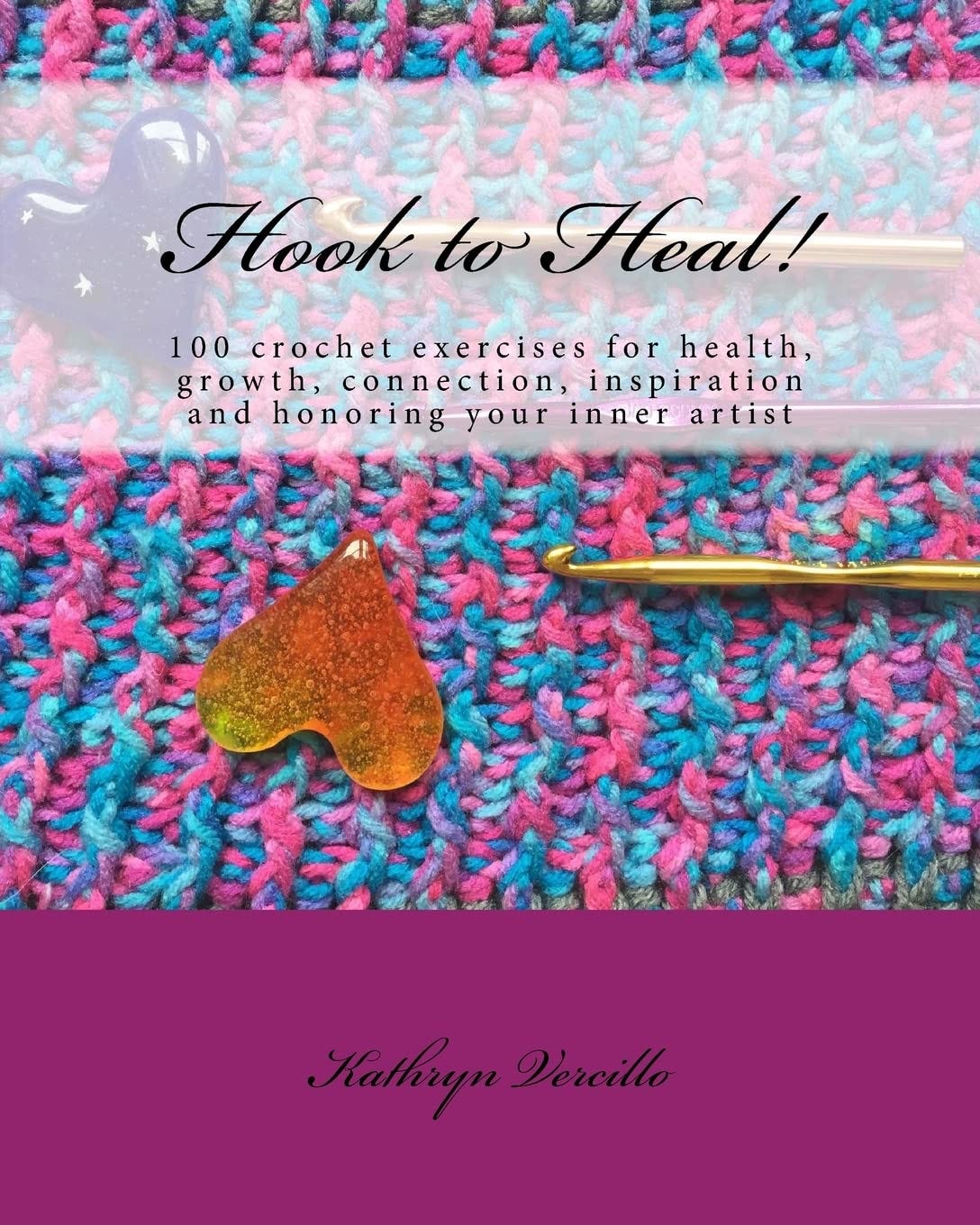
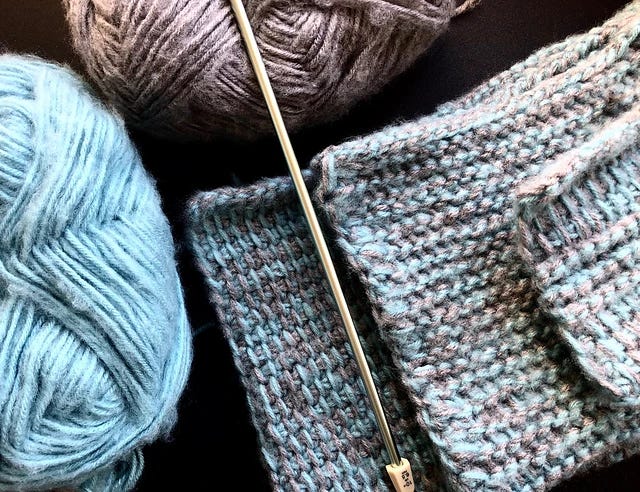

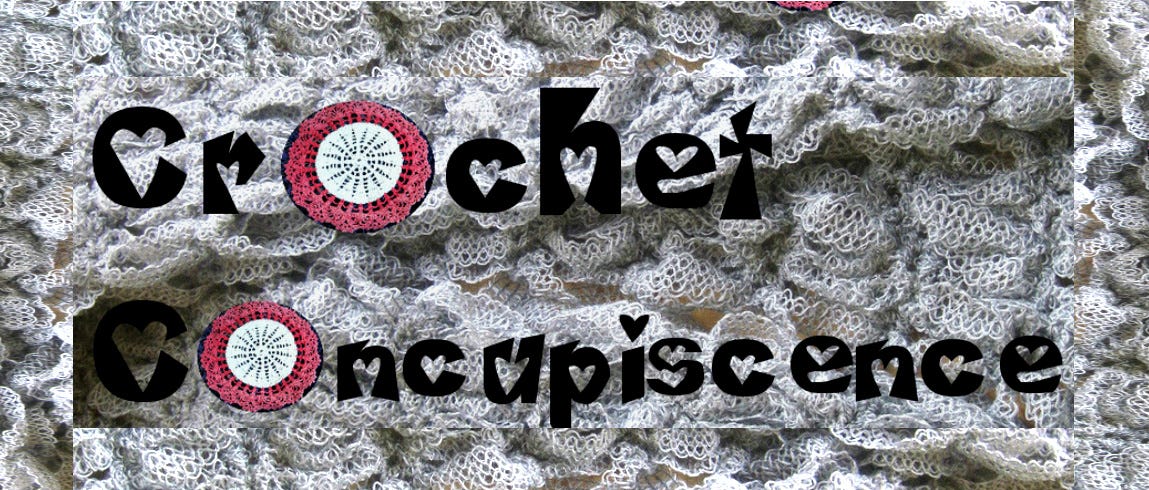
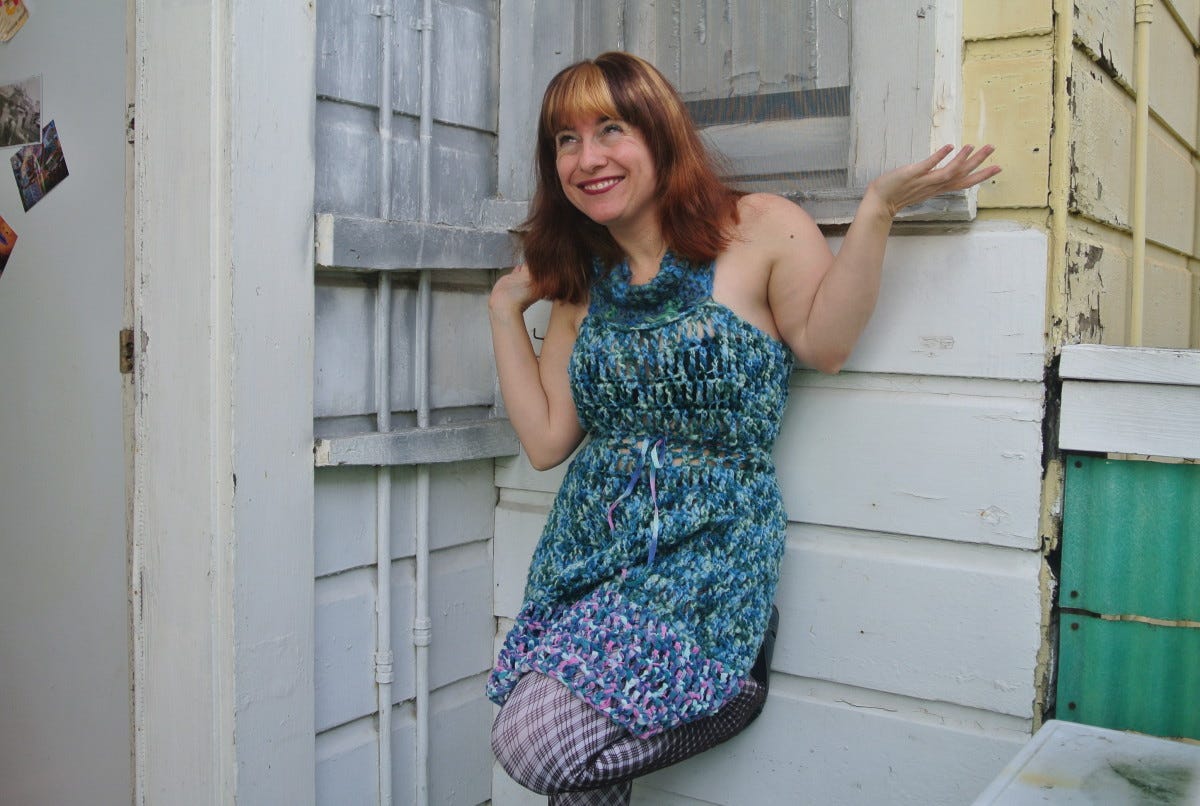

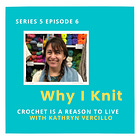

Thank you, I needed to hear this. My gut and mind have been in an uproar for weeks, my creative efforts disparaged. You have allowed me to breathe a little more freely with a welcome and generous sense of hope.